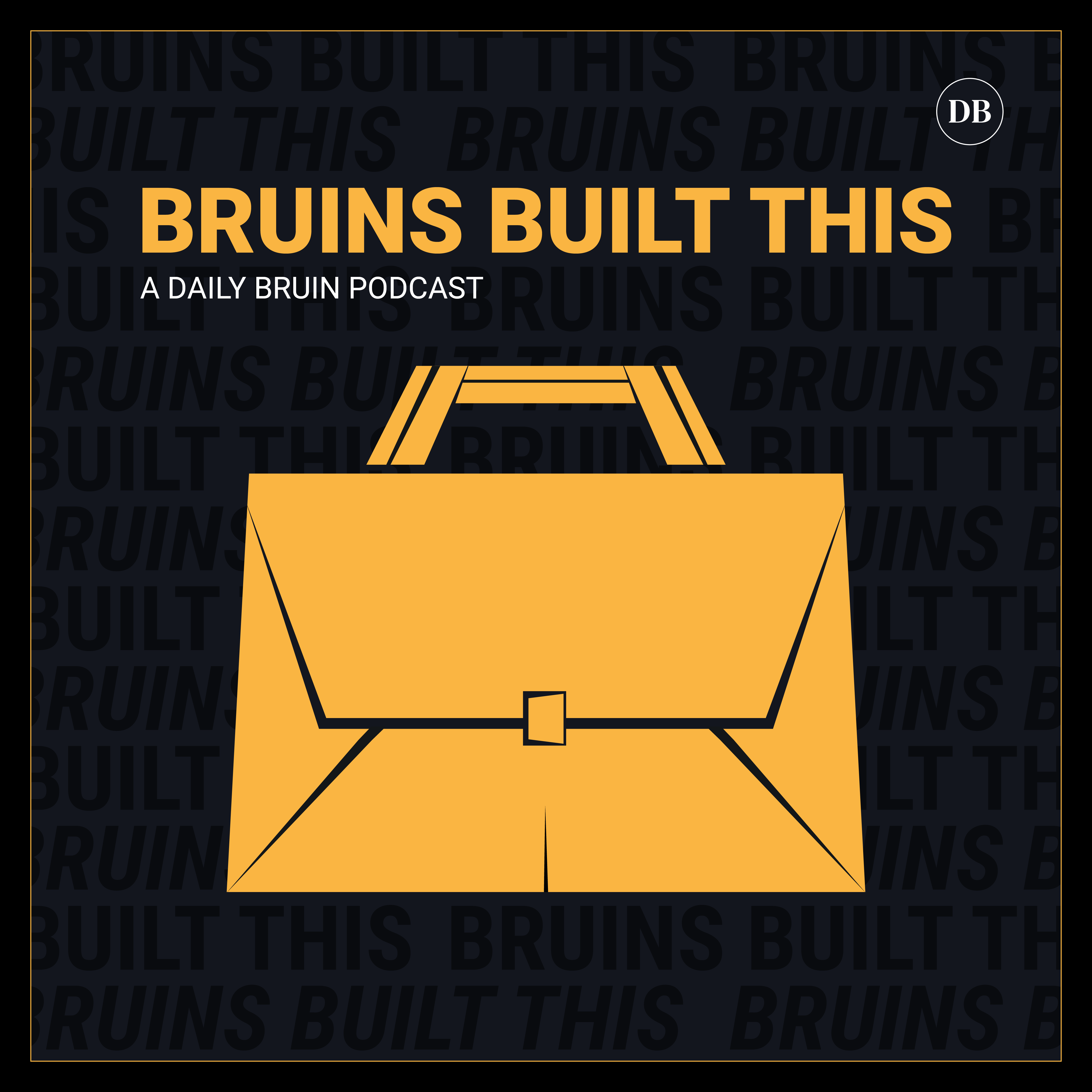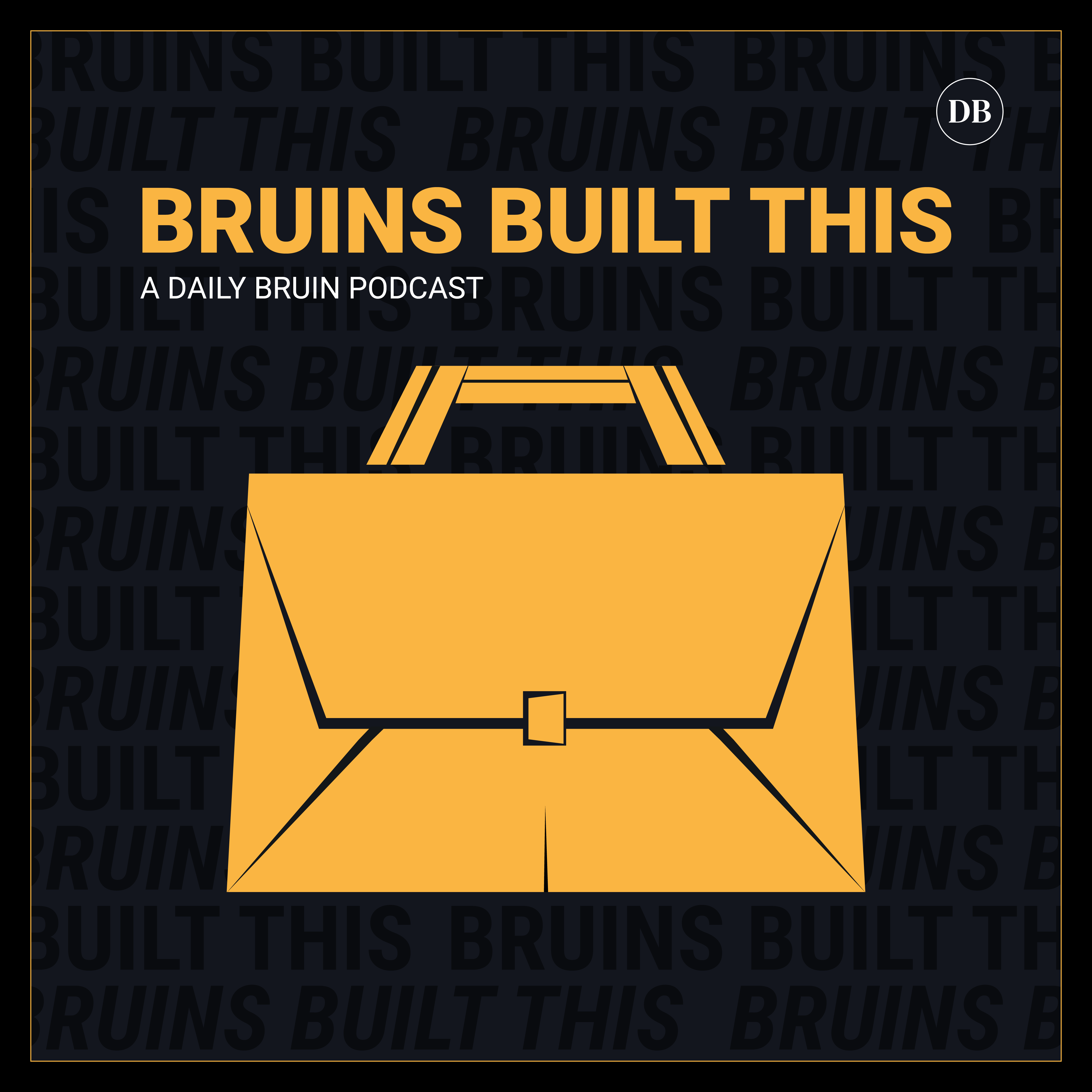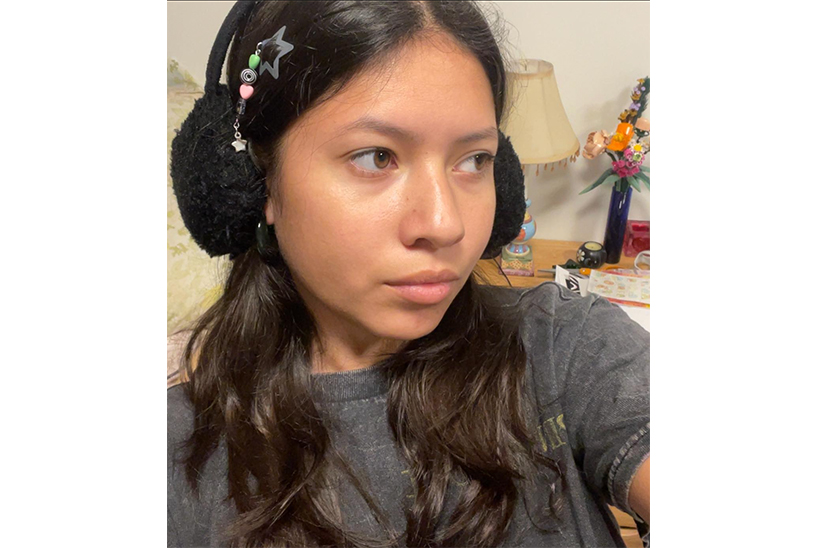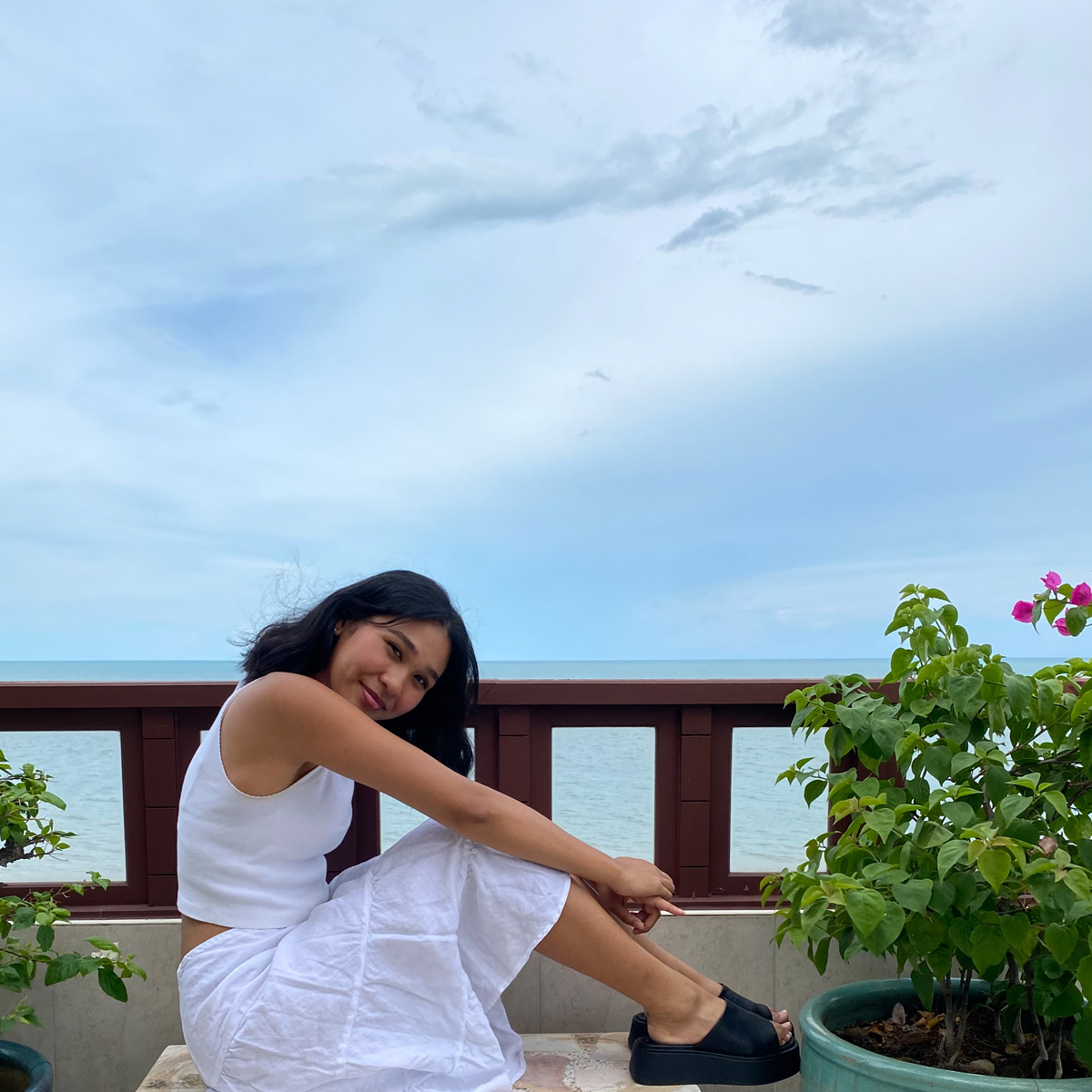Bruins Built This: Beads By Chey Designs

(Alex Yoo/Daily Bruin senior staff)
In this episode of “Bruins Built This,” a Daily Bruin podcast highlighting student and alumni entrepreneurs, Podcasts contributor Isabella Lok interviews Cheyenne Faulkner of Beads By Chey Designs about how she uses beading to interact with the Native American community and how she promotes her business.
Isabella Lok: Hello and welcome to Bruins Built This, a Daily Bruin podcast about UCLA student and alumni entrepreneurs. My name is Isabella Lok, a podcast contributor, and I’m here for another episode of Bruins Built This. Today, I’m interviewing Cheyenne Faulkner, who manages her own business, Beads By Chey Designs. Beads By Chey Designs allows her to be connected to her Native culture. We will be diving deep into the beginning of the journey of Beads By Chey Designs and the hopes and dreams for the business on the podcast today. Hello, Cheyenne and welcome to Bruins Built This. We are excited to talk to you.
Cheyenne Faulkner: Hi, thanks for having me.
IL: Just to get some background, when did you start Beads By Chey Designs and what inspired you?
CF: Originally I started my business in 2020, during COVID. High school just kind of went downhill after, after all of that, and I was a senior at the time. So this was just a really difficult time in my life. And my mom has had this one beading book my whole life. And I think she always intended for me to learn how to bead one day. And I just picked it up one day and decided to try out a couple of things. A few months later, I opened my Etsy shop and started selling all my stuff.
IL: You mentioned in a previous article that you had support from your families for buying supplies. What did your friends think of you starting a business?
CF: I think my friends thought it was pretty cool. I think most of COVID was pretty isolating, because it wasn’t going to school and you know, Zoom, you can’t really connect with people in the same way you can in person. They’ve always supported me. Even now when I do my in-person markets, my friends from high school still come and see me and see all the work that I’ve done. And I think they’re overall really proud of me as well.
IL: You also previously mentioned that in addition to selling your bead work on Etsy, you started to sell it in person, at Vista Farmers Market and Dancing Bear Indian Trader. How is selling your products online different from selling them in person, and what was that shift like?
CF: Well online, you don’t really get to connect with people the same way as you get to do in person. So when I started selling my stuff in person, I was able to see the way that people actually look at my work and compare it to other vendors around me. So it’s a really good feeling to be like, “Wow, I actually get to see you in person and see all the work that you’ve done.” And people, you know, get to actually talk to me about my work and I get to explain to people why I do what I do. It’s always a really good conversation that I get to have with people when I sell it in person. And I personally like it a lot better. I know, people are like, “Well, online is easier.” And well, yes, it’s easier to sell online, I prefer in person, because I’m really proud of what I do. And I really like to share that with people.
IL: Do you find yourself using social media a lot to promote your beadwork?
CF: I do, yes. That’s where most of my following comes from and where most of my customer base comes from, is social media.
IL: And in person, when you sell your products, what kind of conversations do you think are most inspiring to you?
CF: I really like when I sell at Native events and when elders will come and talk to me and say, “Oh, when my eyes were better, I used to be able to do this,” or “I really like that you’re showing our youth how to do these different cultural practices,” because there’s not a lot of people that can teach. And I am self-taught. So I didn’t have an elder to specifically teach me certain ways, but I can pass on my teachings to the younger generation, and that’s what keeps our culture ongoing.
IL: Do you think your business has a strong influence from the values of the Lumbee Tribe?
CF: Yes, I am. My mom is Lumbee from Pembroke, North Carolina, and my dad’s Shoshone-Bannock, from Fort Hall, Idaho. And I think growing up, I was really culturally involved in both of my tribes. And I’ve been to both my dad’s reservation, and then where my mom’s tribe is from as well. And I think it’s really important that I represent both of my tribes in my beadwork. For example, my mom’s tribe, they do a lot of work with the medicine wheel. And I do try to incorporate a lot of those colors in a lot of the beadwork that I make for myself and that I sell as well. On my dad’s reservation, they do a lot of moccasin and leather work, which I’m also trying to get into and, you know, learn how to do those kinds of crafts.
IL: You mentioned that you were self taught and your skill. So how would you improve on your beadwork as you continue to learn new techniques,
CF: I practice every single day, I pretty much get an hour a day, depending on how much homework and all that good stuff that I have. But it’s always practicing and always, you know, looking at past work that I’ve done, and how I can change this color scheme to make it look like it blends better or how can I tighten up this thread so it doesn’t look so loose. And it’s always like a constant reflection. Also getting inspired by other artists that I see on social media, getting ideas from them and you know, getting inspiration sometimes when I don’t always have an idea that I plan on doing.
IL: Do you ever do your feedback with other individuals or is it more, you just do it by yourself?
CF: I used to be mostly by myself, but actually recently with the Retention of American Indians Now! project at the Community Programs Office, I did a beading workshop where we beaded backpacks. And I had all of the American Indian Student Association come and I taught everybody a couple of little stitches that they could do and, you know, let everyone have their own kind of creative expression, which was really fun. I’ve done a couple beading workshops that have become good, and some have gone, you know, a little bit south. Because beading is, you know, it isn’t easy. And it takes a lot of practice. And it takes a lot of good eyesight as well. But it is really fun when I get to share it with other people, when other people get to learn. And they’re like, “Oh, I made something.” And you know, they feel really good about it.
IL: How do you feel like the UCLA community and the Native community at UCLA have influenced your beadwork? Or, how have you felt like the community has supported you at UCLA?
CF: I think I felt really supported coming in. I remember, when I was a freshman at the time, the youth conference that the American Indian Student Association puts on invited me to do a presentation about beadwork. And so immediately, right off the bat, they wanted to include me in stuff. And that also feels really good that, you know, somebody actually cares about my work outside of being Native. And I think that being in that club has really allowed me to grow into my outgoing personality, I think it gives me a really good space that I can go, just be myself, but also be able to share my culture with them, since we all come from very different tribes and very different parts of the world and other states as well. I think it’s just really cool that I get to share that with everybody. And I think everyone also really appreciates that as well. Not a lot of Native kids grow up being very cultural. So a lot of it is very new to them. And I liked that I get to be a part of their reconnecting journey.
IL: You also mentioned, in a previous article, that lots of people ask you about cultural appropriation. So what do you think is considered appropriate versus not appropriate?
CF: I think that, for me personally, everybody, every Native person, will say something different. I love when other people want to buy Native beadwork. At, sometimes at Native events, there’s a lot of non-Natives that come, and they want to buy beadwork, and they want to support Native artists. And I think that’s great. If you’re not Native, and you want to support Native artists, I think it’s 100% okay to buy from Native artists, as long as you’re buying from, you know, a good source. But, as you’ve seen with a lot of mainstream companies making bead work and putting it out on the market, that is cultural appropriation. That’s not showing the Native community the way it is. That’s just profiting off of something they think is cute.
IL: And you also mentioned that knowing the history of beadwork is important. And can you tell us a little bit about why is beadwork important to the Native American community?
CF: Well, beading, as it is today, has definitely come a long way from how we used to do beadwork many, many years ago. It is a lot more modernized. We didn’t always have glass beads and needles. But the premise is still the same. We had our different types of beads. We used bones, whatever dried up berries we would find, and adding that to our regalia pieces. And it’s just more of an expression rather than more of a cultural practice. I think nowadays, with the technology and the tools that we have, we’ve just expanded on that previous knowledge, and I think that that’s really important. But remembering where we started out versus where we are now, I think, is really important. You know, we didn’t always have all these really nice things, and now we do. And we can express our culture in a more fun and more individual way rather than everyone kind of, you know, having the exact same thing.
IL: And with all the new tools that are now available, what do you think is the hardest beadwork to make? And what’s the easiest one?
CF: I think the easiest one would be – oh, that’s a hard question. So I think probably the hardest thing for me is beading on leather, because the needles are just gonna stab you right in the hand, and it’s very painful. So leather work, I would say, is definitely the hardest work for me. Like beading moccasins is pretty difficult, and making designs line up and doing all the different stitches, I think, is pretty difficult. I would say, for me, the easiest is probably like little dangly earrings because you just throw them on and tie a knot and you call it a day.
IL: Since beadwork is individual, do you think that, since you do have a business aspect, that creating beadwork for others takes away from the individuality of it?
CF: I personally don’t. A lot of the beadwork that I do, I just have an idea, and I just put it out there into the universe. And I think that’s what a lot of people appreciate. And, if you go on Instagram and you look at other beaders, you can see that every beader has their own individual style. While I may make the same type of beadwork as somebody else, if you look at our beadwork side by side, you can tell that one person likes this type of stitch over another type of stitch, or that one person likes to use this cut of a bead rather than another cut of a bead. So you can definitely tell that there’s a style to each beader, which I think is really cool. And, you know, when you look at someone’s beadwork collection, you can tell that they came from different artists. You can, you know, you do have an individual aspect. I think some of the times when it’s limiting is when, for example, you have a custom order, and somebody wants something very specific. I do have to make what the customer wants, but I always have other ideas. Like, “Oh, you can add this color here, you could do this design here.” So I would say that’s probably the only time that I’m pretty limited.
IL: And speaking on colors, in a previous interview, you said that different colors mean different things, so can you go over what are the most important colors in beadwork?
CF: So there’s kind of two groups, I would say, that are color specific, that mean certain things. So the medicine wheel colors are red, black, yellow and white, and those colors, you know, represent healing. Each color of the medicine wheel means something different to each tribe. So if you talk to every single person, you’ll hear something different about what that means, and I think that that’s really cool. And I try to incorporate that a lot into my beadwork. And then there’s also colors that just look good together that people typically really want. So I always get requests for turquoise and then black, red, orange, yellow, and white. And that’s, Fire Colors is what people call them in the community. And those colors just blend really well together, so people just enjoy that. So you’ll see that very often.
IL: What’s your personal favorite color?
CF: My personal favorite color is, lately I’ve been really enjoying burgundies. Burgundies and ombre reds have been my thing lately, which I really like.
IL: Did you have any obstacles creating a business or any backlash?
CF: Oh, yes. I was actually talking about this with one of my mentors yesterday. But when I first started doing TikToks, specifically, people had a heyday just being like, “Oh, well, you don’t look Native, you’re not Native.” And I think that that’s something that usually really, really puts poison in the Native community, you know, Native people pitting each other against each other. And I’m a really big advocate of there’s no one way to look Native. While, yeah, I might have lighter skin, that doesn’t mean absolutely anything. So I think that that was like one of the most – it was just kind of annoying because I grew up with a lot of people who were all different skin tones, came from different tribes, and I grew up with that as normal. So when I first experienced that, I was like, “Oh, these people actually don’t know anything, and they’re just uneducated.” And so, for a long time, I tried to do a lot of educational stuff. But, you know, at the end of the day, people are going to believe whatever they want. And you kind of just have to blow it off and just be like, “Well, that sounds like a personal problem, and I can’t help with that.” And it doesn’t really bother me anymore. At this point, I’m like “LOL, that’s on you.” I’m like, “I can’t help you with what you think.” But you can’t let that stuff get to you because then, you know, I won’t want to post anything or, you know, that’ll stop people from pursuing their craft.
IL: So initially, would you respond by just ignoring them? Or would you respond by posting the educational TikToks?
CF: I would post educational things or try to educate them on, blood quantum is not actually real, which is, you know, a controversial opinion as well. But that didn’t actually do anything, and it doesn’t actually educate anybody. So I just ignore them now, and I let other people fight in the comment section about it because I don’t have time for that.
IL: Do you also use TikTok to promote your business as well? Or do you just use it to show how to make beadwork?
CF: I do a little bit of both. So it just kind of depends on you know what I have going on, like during the summer when I have more time, it’s more of like how I make stuff. And then during the school year when I have a little bit less time it’s just showing off my work. “Hey, this is for sale or hey, I’m going to be at this event here.” So it kind of just depends on the time of the year and how much time I have.
IL: How many TikTok followers do you have?
CF: I think I have 173,000 right now.
IL: Did your following on Instagram and Tik Tok start over COVID like exponentially, or was it more of a slow increase?
CF: It was a little bit of both. So I had a couple of TikToks go viral. And that obviously did boost a lot of followers pretty immediately. Over time, I also did grow after that because I mean, just being on the platform for a long time, more people are going to, you know, interact with your content. But it was really was definitely a little bit of both. And it was more in the beginning, it was more just like there’s more people on the internet and more people on Tik Tok. So, the likelihood of your video catching somebody’s eye was probably more likely.
IL: Is your main mode of selling your products through social media? Or is it also a mix of in-person and social media?
CF: I have a website now. So that is where I do sell mostly. But I do also sell at in person events when I have time in between school things.
IL: How do you balance actually creating the beadwork, and then marketing and then later selling them?
CF: It is a long process because I have to come up with the idea first, and now I spend a couple of days working on a piece rather than being at home during the summer and I have all day to just sit there for multiple hours and bead. It will usually take me about a week to put up one piece on my website between making it, photographing it, and then uploading it to my website.
IL: And then how often do you think you have to come up with new ideas? Or do you find yourself creating the same type of beadwork?
CF: It really depends. I think, right now, since I just don’t have a lot of time, it tends to be like similar styles of beadwork, because that’s kind of the path that I’m on right now. But during, when I have more time, like during breaks, I will just like be out shopping one day, my mom’s like, “I have this idea,” and then I’ll be like, “okay”, and then we come home and brainstorm. And then I can make different types of earrings or necklaces or whatever I’m feeling that day. But when I have a little less time to be creative, it tends to be more of the same thing.
IL: During the trial and error process of creating beadwork, what do you think is a common mistake that you’ve made? And how have you overcome it?
CF: I think the common mistake that I made was more from a business perspective. Every month, I used to on the first of the month, I used to put a whole slew of beadwork, which was very unattainable, because I’ll never have time like I did in 2020. And also, it’s very limiting, because you just think, “Oh, I have to put all this bead work out because every other person is putting the work out on this day or this time” and you want to be competitive. And I’ve kind of learned now that it’s not about being competitive, it’s about “I made this piece and I want somebody else to love it just as much as I do.” So I don’t really put time constraints on myself like I used to, I think that that’s a really common mistake, I think with all business owners is, you know, feeling that you have to be putting stuff out constantly. And it’s not that way in the beadwork community because everybody understands that you are just doing it all by yourself and you’re the sole artist and I think people understand that more.
IL: What are your goals for Beads by Chey Designs? And where do you see the brand going?
CF: My overall goal is to be at events every weekend. I had started doing powwows around last year and my goal is to be able to have a full set with beadwork, and I’m now sewing and you know making different pieces. So my goal is to have a complete setup and set up at multiple powwows every year.
IL: And lastly, do you have any advice for aspiring entrepreneurs?
CF: My main advice is to trust your gut. There’s been a lot of times where I’ve gotten advice from other people. While it may be good advice, I think that your business and you as a person is very individualized. And I think a lot of businesses for example, clothing companies, they have a different way of running their business than someone who’s an artist, and who’s just running it by themselves, and don’t feel pressured to have to do the same things that mainstream companies do because you’re not the same and your work is a lot more valuable than what you buy at Walmart.
IL: Thank you so much for talking with me today. I really appreciate hearing from you and your business. And I’m looking forward to seeing what’s in store for Beads by Chey Designs. Bruins Built this is brought to you by The Daily Bruin, UCLA’s student newspaper. You can listen to this show and others by The Daily Bruin on Spotify, Apple Podcasts and SoundCloud and a transcript of this show is available at dailybruin.com. Thank you and we’ll see you next time.






